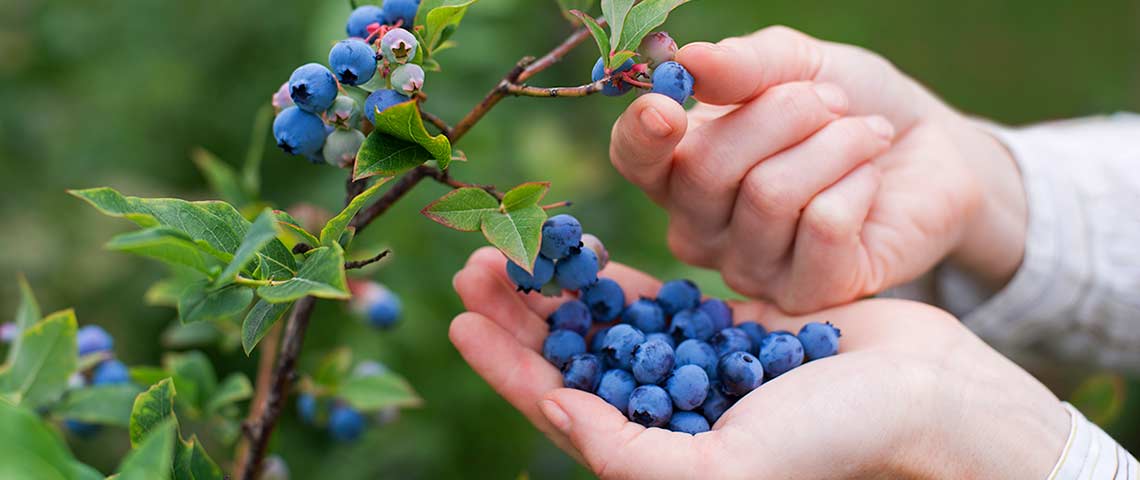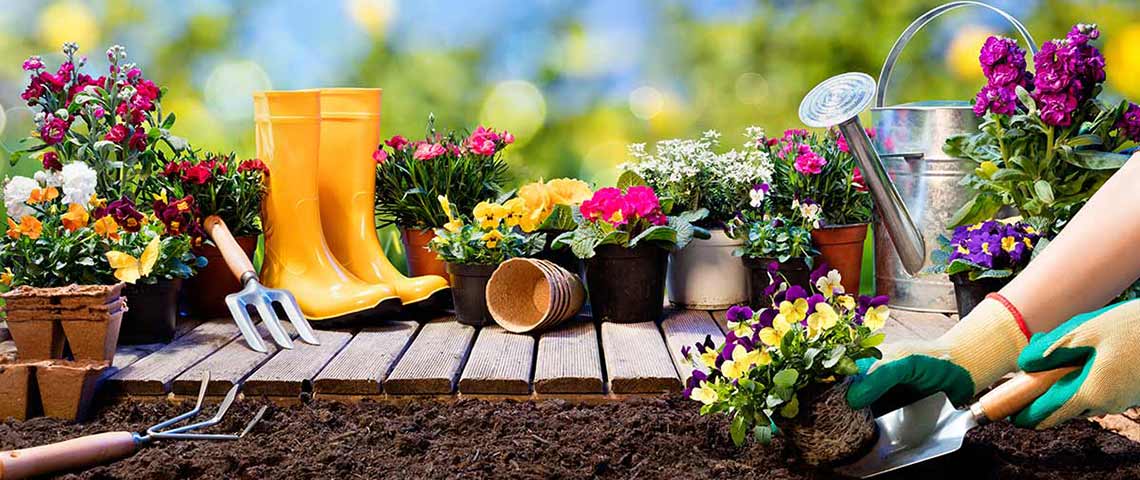How to Nurture Plants That Love Acidic Soil
Some plants just love to sink their roots into low-pH, acidic soil. Blueberries, azaleas, camellias and blue hydrangeas are on that list. If your garden dreams include any of these, it's time to tune in to their acidic ways. Though they've earned the nickname "acid-lovers," it's not acid they're after. These plants crave nutrients tied to low soil pH. Connect the dots and they'll return the favor with gorgeous blooms, foliage and fruit.
- Connecting Soil pH and Plants
- Preparing Your Native Soil
- Feeding Acid-Loving Plants
- Troubleshooting Low-pH Plants
Connecting Soil pH and Plants
Mother Nature linked acid-loving plants and soil pH inextricably. There's no way around it, so don't even try. When soil pH moves above neutral — 7.0 on a scale of 14.0 — you're into alkaline territory, where certain nutrients get "tied up" so plants can't use them.
The same thing happens with different nutrients when soil pH moves below 7.0, into what's known as the acidic range. But here's the key: The nutrients in your soil don't change with these pH shifts. What changes is their availability to your plants.
Most plants, including vegetables and herbs, grow best with soil pH in the slightly acidic, near-neutral range around 6.0 to 7.0. That's where major plant nutrients stay readily available. But acid-loving plants need larger quantities of some nutrients, like iron, that get more available when pH levels drop. They thrive when soil pH stays near 5.5 pH or even less.
That's where your acid-loving plants hit their peaks — and so do your homegrown blooms and berries.
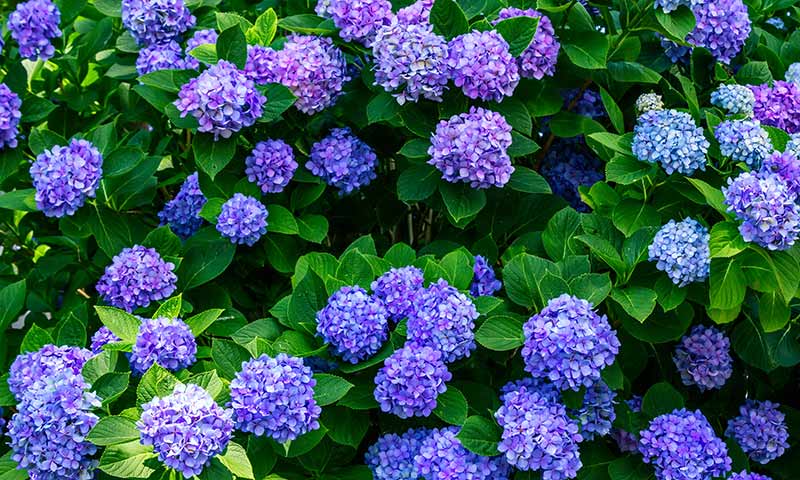
Blue hydrangea flowers get their fabulous color thanks to elements available at low soil pH.
Preparing Your Native Soil
With plants that prefer low-pH soil, success starts with preparation. Improving your native soil and modifying its pH, if needed, gives your plants the foundation needed to be all they can be — and achieve your garden goals.
Soil testing is the perfect place to start. Soil samples are super easy to take, and they provide all kinds of information to help you get to know your own parcel of earth. You'll eliminate the guesswork and find out about your soil's pH and other essentials for plant vigor and growth.
It's a great excuse to get your hands dirty and geek out over soil. (It just might become your favorite thing.) Tell your soil testing lab what kind of plants you're growing and they can tailor recommendations to exactly what you need.
If your soil is too alkaline for acid-lovers, you can give Mother Nature a hand. For homegrown blueberries, for example, soil pH near 4.5 to 5.5 is ideal. Your soil test may recommend soil amendments like elemental sulfur, which naturally lowers soil pH when mixed into soil, or ammonium sulfate, which feeds plants nitrogen and lowers soil pH even faster.
Follow the soil test laboratory's recommendations for the type of amendment and the amount, so your blueberry bushes and other acid-loving plants can access the nutrients they prefer.
As you amend, take a page from regenerative agriculture and make time to nurture your native soil. Pennington Rejuvenate Natural & Organic Garden Soil Mix revitalizes your soil with essential plant nutrients and other earth-friendly ingredients like bio-stimulants to improve nutrient uptake, earthworm castings to enhance soil nutrients, and sustainably sourced peat to help retain water and nutrients for plants to use.
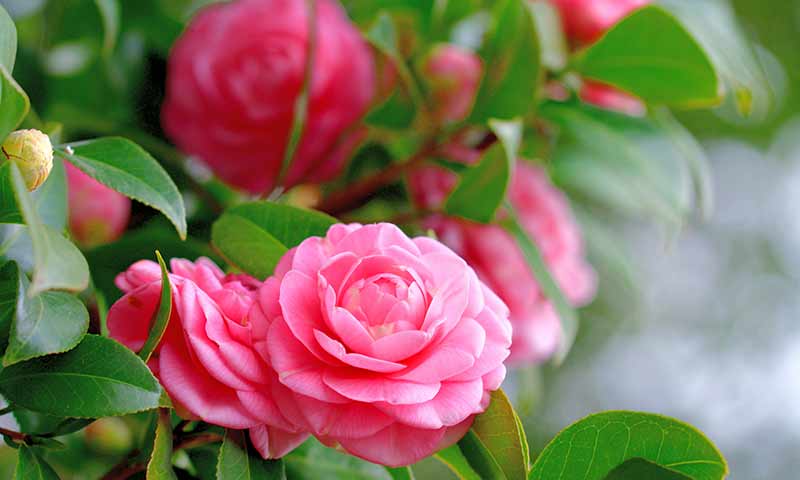
Specially formulated fertilizers help camellia blossoms stay beautiful and leaves stay glossy and evergreen.
Feeding Acid-Loving Plants
Always feed your low-pH plants with fertilizers designed especially for plants that thrive in acidic soil. You can circumvent problems and help your plants look fabulous from the start. Pennington Rejuvenate Plant Food Evergreen & Azalea 4-3-3 nourishes your soil and plants with essential primary nutrients like you'll find in all-purpose fertilizers, but it doesn't stop there.
This premium plant food for acid-loving plants provides other essentials, including calcium, magnesium, sulfur and iron to help plants stay beautiful and thrive. With a blend of organic and natural ingredients, this plant food combines plant nutrients with earthworm castings, mycorrhizal fungi, beneficial microbes and humic acids to strengthen and nurture plants from the inside out.
Feed your acid-loving plants at planting time, then reapply every one to two months throughout the growing season. Just follow label instructions for your plant type.
Don't be tempted to overdo your fertilizers or soil amendments. Too much of a good thing is just that: too much. You can end up with lots of leaves and no blooms or fruits, so stick to the plan. You'll get bigger, more beautiful blooms and berry harvests than unfed or overfed plants.
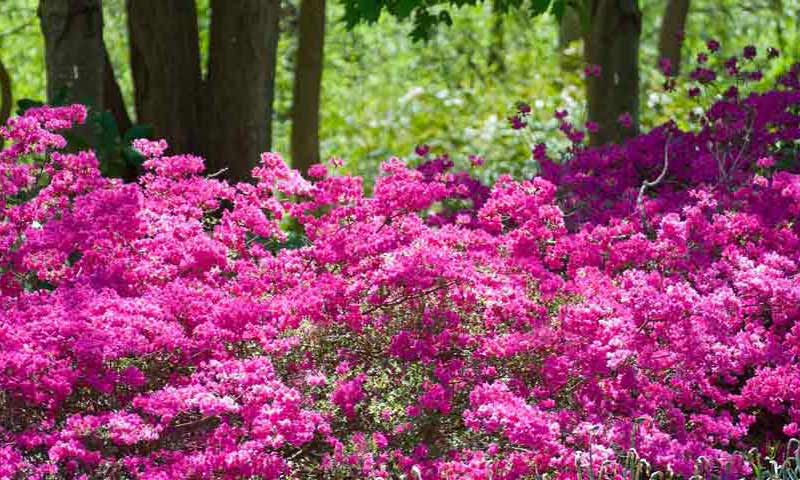
Azaleas and rhododendrons thrive in acidic gardens that mimic woodland soil.
Troubleshooting Low-pH Plants
When alkaline soil shuts down nutrients that your low-pH plants need, the leaves tell an ugly tale. Without enough nutrients, your plants fall short on chlorophyll — the thing that makes leaves green. Then chlorosis sets in, and leaves turn pale or yellow. Left on their own, plants eventually start to fail. That seriously interferes with luxuriant garden plans.
Different nutrients move through plants in predictable ways, so chlorosis patterns hold clues to what's wrong. With nitrogen deficiencies, old and new leaves turn uniformly pale. But iron deficiency hits the youngest leaves first; leaves turn yellow between small, green leaf veins. When magnesium is lacking, yellowing starts at the outer tip and edges of the plant's oldest leaves.
In most cases, it's not that your soil doesn't have enough of these nutrients. High soil pH is getting in the way. If this happens, it's time to dive into soil — and soil testing — again. You'll be back in tune soon, and that's a good feeling.
You can also show your plants some real-time love and nutrients to carry them over. An iron-containing, ready-to-spray product delivers iron and other nutrients straight to needy leaves. For magnesium deficiency, common in blueberries, time-proven magnesium sulfate products like Pennington Epsom Salt deliver the magnesium your berries need.
Acid-loving plants put on some of the most spectacular shows of flowers and fruit you'll ever see. We're here to help you nurture your roots and theirs. With the right soil and nutrients, your plants will love you as much as they love acidic soil — maybe even more. Got a question? We'd love to hear it. We're Pennington. We're here to help you learn and grow.
Always read product labels thoroughly and follow instructions.

